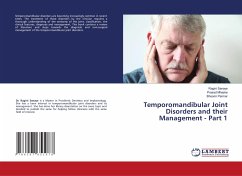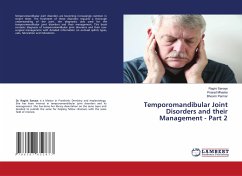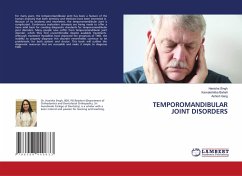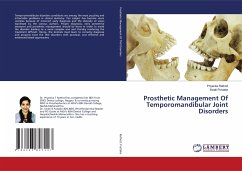
Management of Temporomandibular joint disorders
Management of Temporomandibular joint disorders
Versandkostenfrei!
Versandfertig in 6-10 Tagen
56,99 €
inkl. MwSt.

PAYBACK Punkte
28 °P sammeln!
THE MASTICATORY SYSTEM, a functional unit of the body, is primarily responsible for chewing, speaking, and swallowing. Its components also play a major role in tasting and breathing. The system is made up of bones, joints, ligaments, teeth, and muscles. In addition, an intricate neurologic controlling system regulates and coordinates all these structural components. The masticatory system is a complex and highly refined unit. A sound understanding of its functional anatomy and biomechanics is essential to the study of occlusion. The area where the mandible articulates with the temporal bone of...
THE MASTICATORY SYSTEM, a functional unit of the body, is primarily responsible for chewing, speaking, and swallowing. Its components also play a major role in tasting and breathing. The system is made up of bones, joints, ligaments, teeth, and muscles. In addition, an intricate neurologic controlling system regulates and coordinates all these structural components. The masticatory system is a complex and highly refined unit. A sound understanding of its functional anatomy and biomechanics is essential to the study of occlusion. The area where the mandible articulates with the temporal bone of the cranium is called the temporomandibular joint (TMJ), certainly one of the most complex joints in the body. It provides for hinging movement in one plane and therefore can be considered a ginglymoid joint. However, at the same time it also provides for gliding movements, which classifies it as an arthrodial joint. Thus it has been technically considered a ginglymoarthrodial joint. THE ALIGNMENT AND OCCLUSION of the dentition are extremely important in masticatory function.














